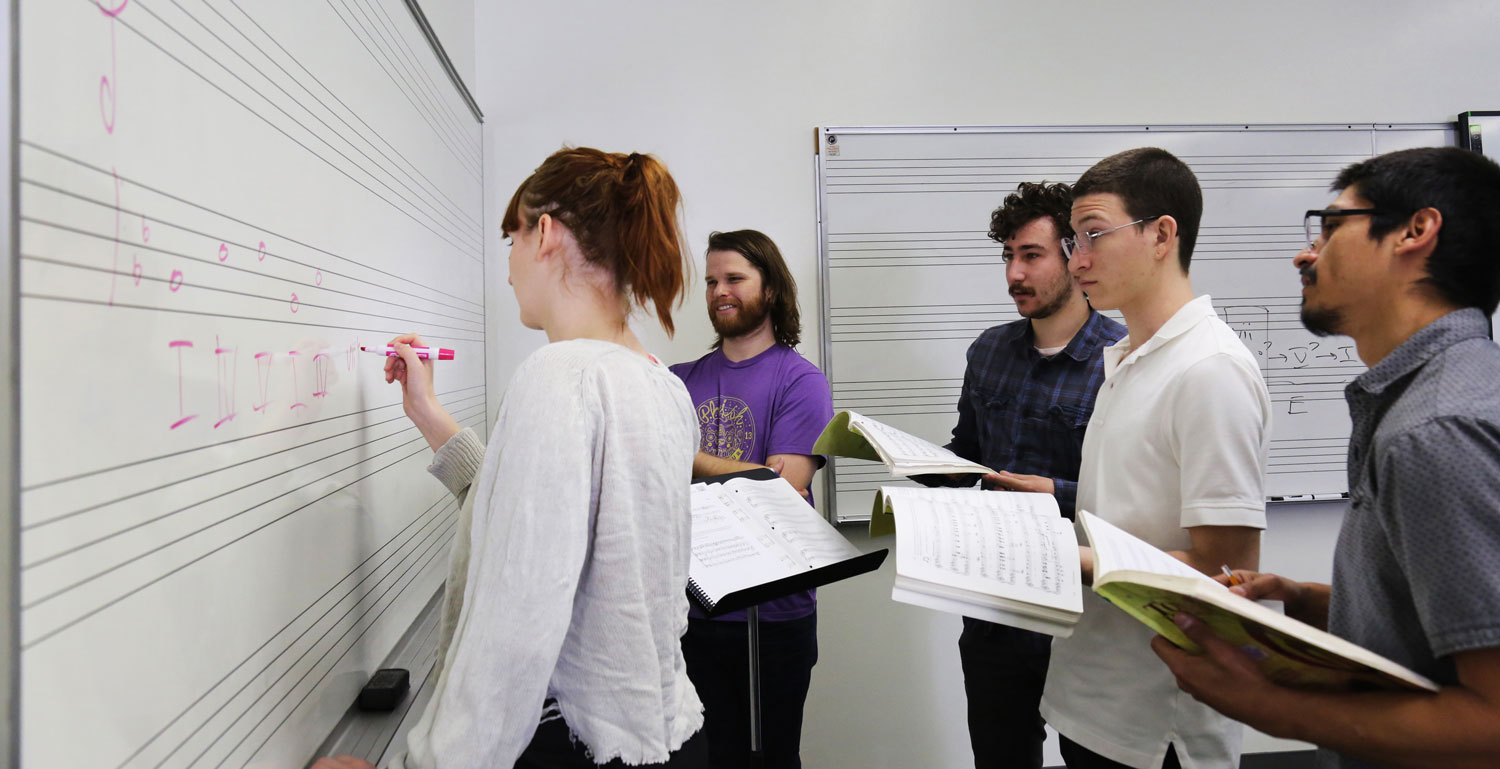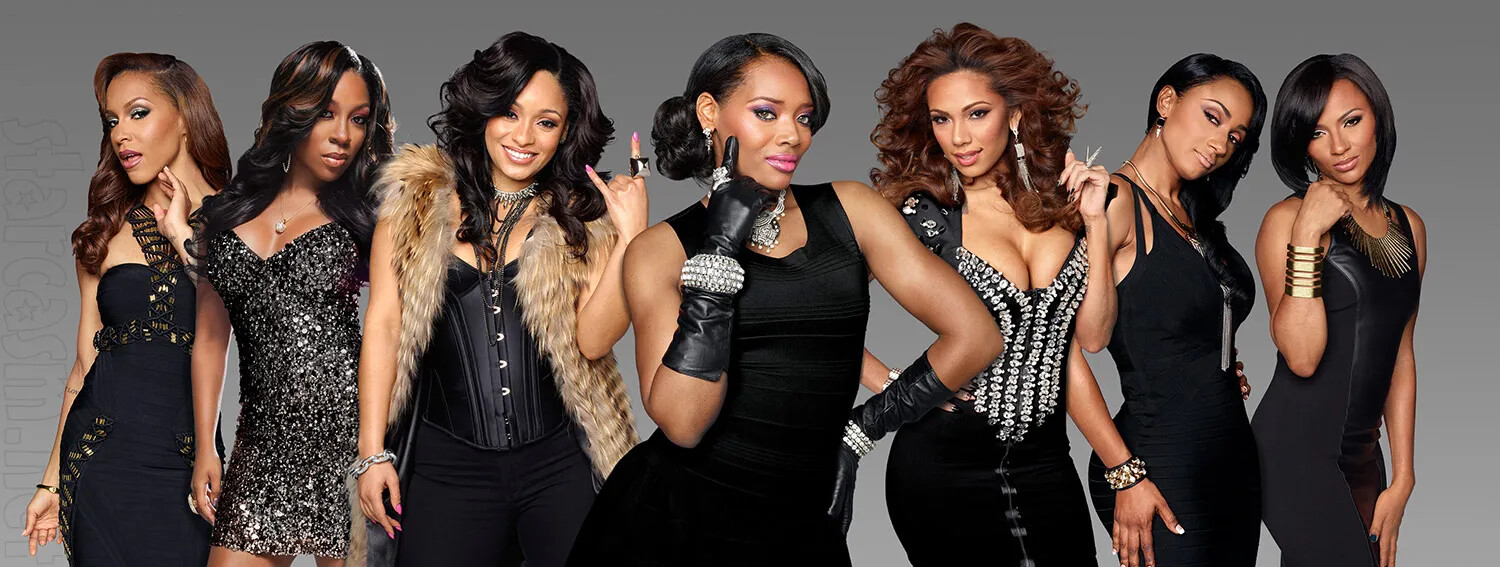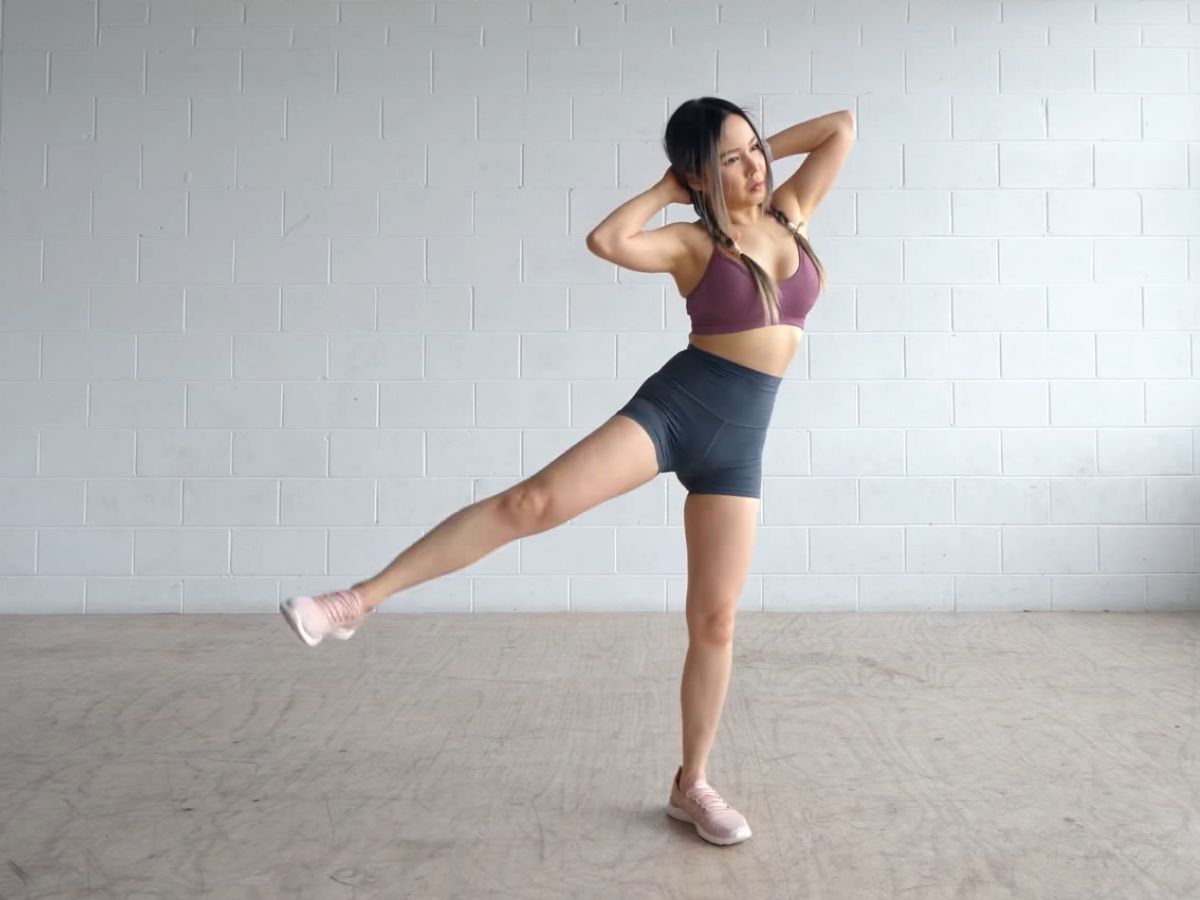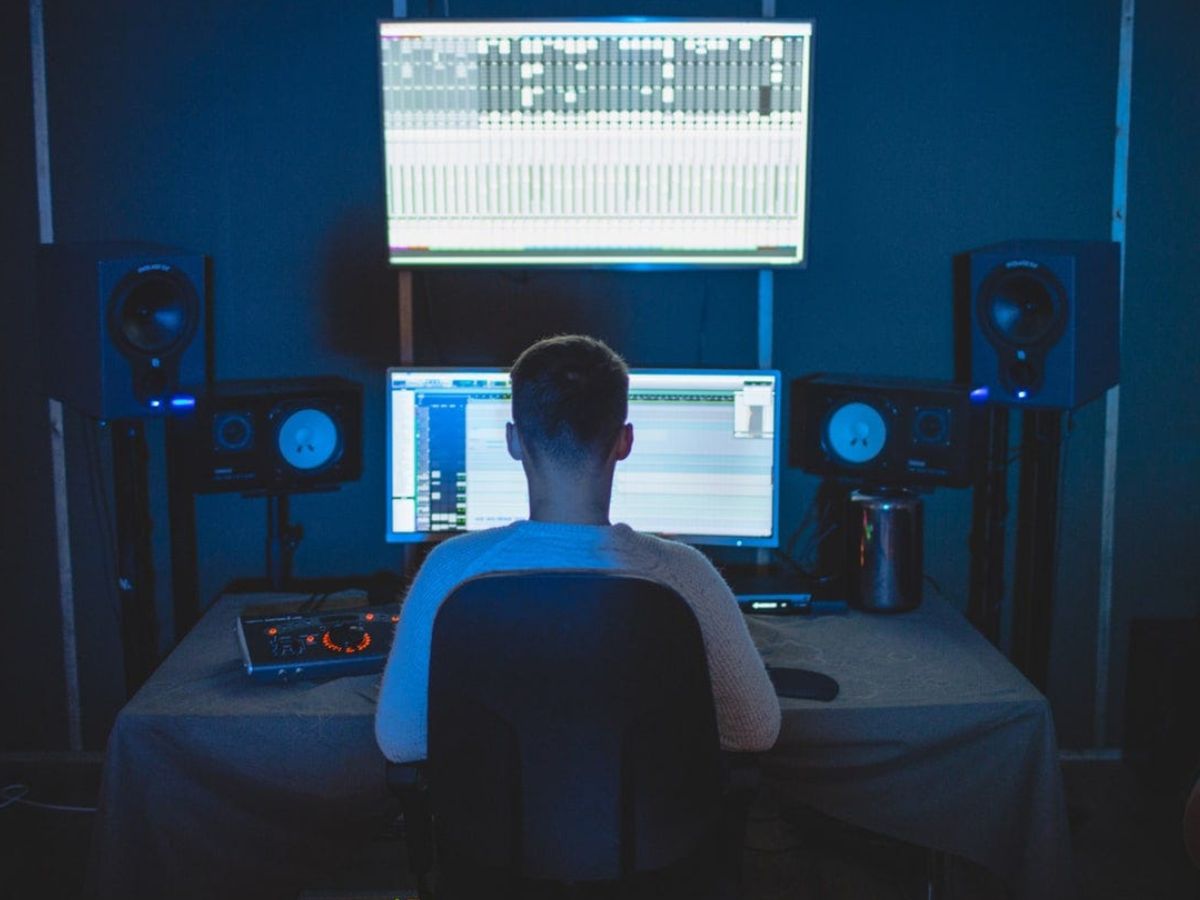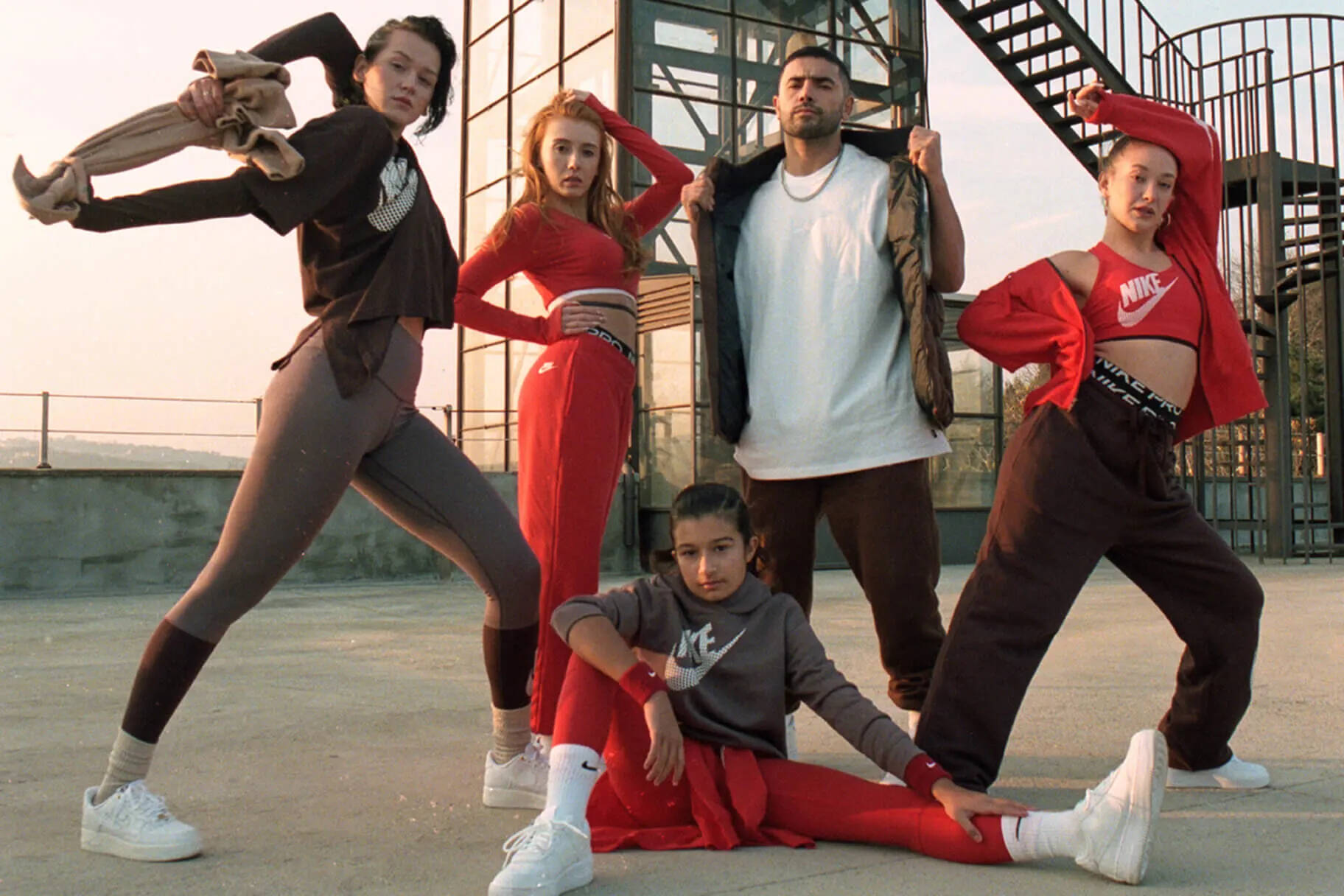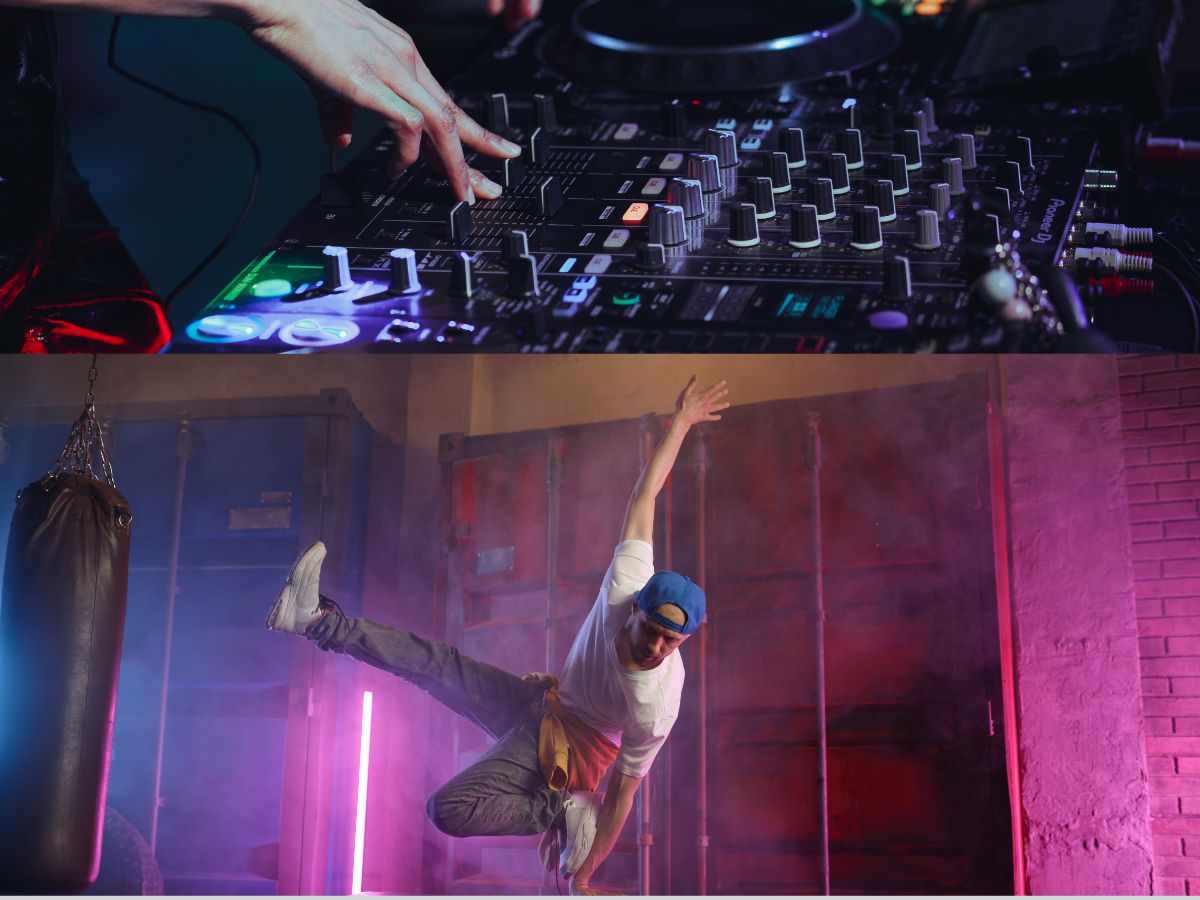

Hip Hop
How Do You Teach A Hip Hop Dance Class
Modified: January 22, 2024
Looking to teach a hip hop dance class? Learn effective techniques and strategies that will engage and inspire your students in this dynamic genre.
(Many of the links in this article redirect to a specific reviewed product. Your purchase of these products through affiliate links helps to generate commission for AudioLover.com, at no extra cost. Learn more)
Table of Contents
- Introduction
- Understanding Hip Hop Dance
- Preparing for a Hip Hop Dance Class
- Setting the Tone and Atmosphere
- Warm-up Exercises
- Teaching Basic Hip Hop Dance Moves
- Choreographing a Hip Hop Dance Routine
- Incorporating Freestyle and Improvisation
- Teaching Musicality and Rhythm
- Building Confidence and Stage Presence
- Analyzing and Critiquing Hip Hop Dance
- Safety and Injury Prevention
- Conclusion
Introduction
Welcome to the world of Hip Hop dance! With its energetic moves, rhythmic beats, and rich cultural history, Hip Hop dance has become a global phenomenon and a form of self-expression for individuals of all ages and backgrounds.
In this article, we will explore the art of teaching a Hip Hop dance class. Whether you are an experienced dancer or a beginner looking to dive into the world of teaching, this guide will provide you with valuable insights and strategies to create a fun and engaging learning environment.
Teaching a Hip Hop dance class goes beyond simply demonstrating moves. It involves understanding the foundations of the dance style, finding creative ways to connect with students, and fostering a sense of passion and confidence in their abilities.
Throughout this article, we will touch upon the various aspects of teaching Hip Hop dance, including warm-up exercises, basic moves, choreography techniques, musicality, and stage presence. We will also discuss the importance of safety and injury prevention, as well as how to analyze and critique Hip Hop dance.
By the end of this article, you will have a solid understanding of the essential elements required to deliver an enriching and successful Hip Hop dance class. So, let’s put on our dancing shoes, turn up the music, and get ready to teach the essence of Hip Hop!
Understanding Hip Hop Dance
Hip Hop dance originated in the streets of New York City in the 1970s, emerging as a form of expression for African American and Latino communities. It is a dynamic and vibrant dance style that encompasses a wide range of movements, including breaking, popping, locking, and freestyle.
At its core, Hip Hop dance is deeply rooted in the history and culture of its communities. It reflects the social, political, and cultural realities of urban life, serving as a powerful medium for self-expression and storytelling.
One of the key aspects of Hip Hop dance is its emphasis on rhythm and musicality. Dancers must have a strong connection to the beat and be able to interpret the music through their movements. This requires a keen sense of timing and an understanding of different musical styles within the Hip Hop genre.
Another distinctive feature of Hip Hop dance is its focus on improvisation and freestyle. While learning choreographed routines is important, dancers are encouraged to explore their own creativity and develop their unique style through freestyle dancing. This not only adds individuality to their performance but also fosters a sense of authenticity and personal connection to the dance.
Hip Hop dance is also known for its high energy and athleticism. It incorporates a wide range of movements, including spins, jumps, isolations, and intricate footwork. Dancers must have a strong physical foundation and be able to execute these movements with precision and control.
Furthermore, Hip Hop dance is deeply interconnected with other elements of Hip Hop culture, such as graffiti art, rap music, and DJing. It is a reflection of the larger Hip Hop community, which embraces creativity, individuality, and a sense of unity.
As a Hip Hop dance teacher, it is essential to understand and appreciate the cultural and historical context of the dance style. This will enable you to teach with respect and authenticity, while also instilling in your students a deeper understanding and appreciation for Hip Hop as an art form.
In the next section, we will delve into the necessary preparations before conducting a Hip Hop dance class.
Preparing for a Hip Hop Dance Class
Before stepping into the dance studio or classroom, proper preparation is essential to ensure a successful Hip Hop dance class. Here are some steps to help you get organized:
1. Familiarize Yourself with Hip Hop Music: As a Hip Hop dance teacher, it is crucial to have a diverse knowledge of Hip Hop music. Familiarize yourself with different artists, genres, and iconic tracks within the Hip Hop genre. This will not only help you create engaging playlists for your classes but also allow you to teach musicality and rhythm effectively.
2. Plan Your Lesson: Outline the structure of your class and plan out the activities and choreography you want to teach. Start with a warm-up, followed by skill-building exercises, choreography, and a cool-down session. Be sure to consider the skill level and age group of your students when designing the lesson plan.
3. Select Appropriate Music: Choose music that aligns with the skill level and style of your students. Opt for tracks with clear beats and distinct musicality, making it easier for dancers to stay on rhythm and interpret the music. Additionally, ensure that the lyrics of the songs are appropriate for all age groups if you are teaching younger students.
4. Research Dance Moves and Choreography: Stay up-to-date with the latest Hip Hop dance moves and trends by watching dance videos, attending workshops, and studying the work of renowned choreographers. This will help you introduce fresh and exciting choreography to your students, keeping them engaged and challenged.
5. Prepare Teaching Materials: Create visual aids, such as posters or flashcards, to help demonstrate and reinforce dance moves. These materials can serve as valuable tools for visual learners and assist in breaking down complex movements into more digestible parts.
6. Set Up the Dance Space: Ensure that the dance studio or room is clean, well-lit, and conducive to movement. Arrange the space to allow for proper spacing between dancers, providing them enough room to execute movements safely. Make sure the flooring is suitable for dancing, considering factors such as grip, shock absorption, and potential slip hazards.
7. Gather Necessary Equipment: Check if any equipment is required for your class, such as speakers for playing music, a portable mirror for students to observe themselves, or props for specific routines. Having all the necessary equipment ready before the class starts will help minimize distractions and maintain a smooth flow throughout the session.
By investing time and effort in preparing for your Hip Hop dance class, you will create a well-structured and engaging learning experience for your students. In the next section, we will discuss how to set the tone and atmosphere to create a positive learning environment.
Setting the Tone and Atmosphere
Creating a positive and supportive atmosphere is crucial for a successful Hip Hop dance class. The tone you set at the beginning of the session will greatly influence the energy, enthusiasm, and engagement of your students. Here are some strategies to help you establish the right atmosphere:
1. Greet and Connect with Your Students: As students arrive for class, take the time to greet each one individually. Make them feel welcome and comfortable, and establish a personal connection. This will help build rapport and trust, making the students more receptive to your instruction.
2. Establish Expectations: Clearly communicate your expectations for behavior, discipline, and effort from the start. Set guidelines for respectful communication, punctuality, and focus during class. This will create a structured environment and ensure that everyone is on the same page.
3. Encourage a Positive Mindset: Hip Hop dance can be physically demanding and challenging for some students. Encourage a positive mindset by reminding students that mistakes are part of the learning process and that progress comes with practice and perseverance. Foster a supportive and non-judgmental environment where students feel comfortable taking risks and expressing themselves freely.
4. Use Positive Reinforcement: Acknowledge and celebrate the achievements and efforts of your students during the class. Offer specific praise for improvements in technique, creativity, or commitment. Positive reinforcement boosts confidence and motivation, inspiring students to continue pushing themselves.
5. Foster Teamwork and Collaboration: Encourage students to work together and support one another. Incorporate partner or group activities that promote teamwork and collaboration. This fosters a sense of community within the class and encourages students to learn from and inspire each other.
6. Create a Fun and Energetic Environment: Hip Hop dance is known for its high energy and enthusiasm. Incorporate games, challenges, or freestyle sessions that allow students to let loose, express themselves, and enjoy the music. This creates a vibrant and exciting atmosphere that keeps students actively engaged throughout the class.
7. Practice Effective Communication: Clearly explain and demonstrate dance moves and choreography, taking into account different learning styles. Use visual cues, verbal instructions, and hands-on guidance when necessary. Be patient and approachable, ensuring that students feel comfortable seeking clarification or asking questions.
By setting the right tone and atmosphere in your Hip Hop dance class, you create a safe and supportive space for students to learn, grow, and express themselves through dance. In the next section, we will discuss warm-up exercises that prepare the body for movement and help prevent injuries.
Warm-up Exercises
Before diving into the energetic and dynamic movements of Hip Hop dance, it is crucial to properly warm up the body. Warm-up exercises help to increase blood flow, improve flexibility, and prepare the muscles, joints, and ligaments for dance. Here are some essential warm-up exercises to incorporate into your Hip Hop dance class:
1. Cardiovascular Exercise: Start the warm-up with light cardiovascular activities such as jogging in place, jumping jacks, or dancing to an upbeat song. This increases the heart rate, raises body temperature, and activates the major muscle groups.
2. Joint Mobilization: Perform gentle circular movements and rotations at the major joints, including the neck, shoulders, wrists, hips, knees, and ankles. This helps to lubricate the joints, increase range of motion, and reduce the risk of injuries.
3. Stretching: Incorporate dynamic stretching exercises that target the main muscle groups used in Hip Hop dance. Focus on stretches for the legs, hips, back, and shoulders. Include exercises such as lunges, leg swings, hip rotations, and arm circles. Emphasize controlled movements and avoid bouncing or excessive stretching.
4. Core Activation: Engage the core muscles with exercises such as planks, abdominal crunches, or bicycle crunches. A strong core improves balance, stability, and control during dance movements.
5. Isolations: Perform isolations to warm up specific body parts and increase body awareness. Isolations involve moving one body part at a time, such as the head, shoulders, chest, ribcage, or hips. This helps to improve coordination and fluidity in movements.
6. Balance and Proprioception: Include exercises that challenge balance and proprioception, such as standing on one leg, doing heel-to-toe walks, or balancing on a wobble board. This enhances stability and control during intricate dance moves.
7. Breathing Exercises: Integrate breathing exercises into the warm-up to focus and calm the mind. Encourage students to take deep breaths in through the nose and exhale slowly through the mouth. This promotes relaxation and mental readiness for dance.
Remember to emphasize the importance of proper form and alignment during warm-up exercises. Encourage students to listen to their bodies, start gently, and gradually increase the intensity of the movements. A thorough warm-up not only reduces the risk of injuries but also prepares the body and mind for the energetic and dynamic nature of Hip Hop dance.
In the next section, we will delve into teaching basic Hip Hop dance moves that form the foundation of this dynamic dance style.
Teaching Basic Hip Hop Dance Moves
As a Hip Hop dance teacher, introducing and teaching basic moves is essential to build a strong foundation for your students. These moves serve as building blocks for more complex choreography and allow students to develop a solid understanding of the Hip Hop dance style. Here are some tips to effectively teach basic Hip Hop dance moves:
1. Break Down Movements: Start by breaking down each move into smaller, more manageable parts. Demonstrate the movement slowly and clearly, highlighting key points such as foot placement, body posture, and arm positions. Encourage students to practice each part separately before putting it all together.
2. Provide Visual and Verbal Instruction: Use visual aids such as posters, diagrams, or videos to reinforce the instructions. This appeals to visual learners and helps them better understand and replicate the movements. Pair visual aids with clear and concise verbal instructions, explaining the purpose and execution of each move.
3. Incorporate Repetition: Repeat each move multiple times, allowing students to internalize the movement and develop muscle memory. Breaking down the move into smaller parts and gradually increasing the speed and complexity of the repetitions helps students grasp the rhythm, coordination, and timing required for the move.
4. Encourage Attention to Detail: Emphasize the importance of attention to detail in executing the move correctly. Highlight nuances such as body isolations, weight shifts, and expressions that capture the essence of the Hip Hop dance style. Encourage students to engage the entire body and add personal flair to make the moves their own.
5. Utilize Freestyle and Improvisation: Allow students to explore their creativity and individuality by incorporating freestyle and improvisation into the lesson. Encourage them to experiment with the basic moves, adding variations and personal style. This fosters self-expression and builds confidence in their ability to create unique movement sequences.
6. Use Progressions: Build upon the basic moves by introducing progressions that add complexity and challenge. For example, start with a simple step touch, then progress to adding arm movements or footwork variations. This gradual progression keeps the class engaged and provides a sense of accomplishment for students as they advance.
7. Be Patient and Supportive: Hip Hop dance may be unfamiliar to some students, and it takes time to develop the coordination and muscle memory required. Be patient and supportive, providing encouragement and constructive feedback as students learn and improve. Create a non-judgmental environment where mistakes are seen as opportunities for growth.
Remember, the key to teaching basic Hip Hop dance moves is to break them down, provide clear instruction, encourage practice, and foster creativity. These moves lay the foundation for more complex choreography and allow students to develop their own unique style within the Hip Hop dance genre.
In the next section, we will explore how to choreograph a Hip Hop dance routine that combines these basic moves into a cohesive and engaging performance.
Choreographing a Hip Hop Dance Routine
Choreographing a Hip Hop dance routine allows you to showcase the creativity, style, and technical skills of your students. It is an opportunity for them to put together the basic moves they have learned and create a cohesive and engaging performance. Here are some steps to help you in the process of choreographing a Hip Hop dance routine:
1. Select a Theme or Concept: Start by choosing a theme or concept for your routine. This could be based on a specific song, a story, an emotion, or even a social issue. Having a central theme will give your routine a clear direction and help guide your choreographic decisions.
2. Determine the Structure: Decide on the structure of your routine, including the intro, verse, chorus, and any other sections. Consider how different moves, formations, and dynamics can be incorporated to create variation and maintain the interest of the audience.
3. Incorporate Transitions and Formations: Plan smooth transitions between different moves and sections to create a seamless flow in your routine. Experiment with different formations, such as circles, lines, or diagonals, to add visual interest and dynamic composition to your choreography.
4. Mix Basic Moves with Advanced Techniques: Create a balance between basic moves and more advanced techniques in your routine. Showcase the foundational moves you have taught, but also challenge your students by incorporating more intricate footwork, isolations, body rolls, or floorwork. This will demonstrate their growth and versatility as dancers.
5. Sync Choreography to the Music: Pay close attention to the musicality of the chosen song and let it guide your choreographic decisions. Match the accents, beats, and changes in the music with corresponding movements, creating a synchronized and impactful routine that enhances the emotional impact of the song.
6. Add Levels and Dynamics: Incorporate variations in levels, such as floorwork, jumps, or lifts, to add depth and dimension to your routine. Explore different dynamics, including sharp hits, smooth glides, or explosive bursts of energy, to create contrast and capture the attention of the audience.
7. Encourage Individual Style and Expression: Allow each dancer to bring their own style and personality into the routine. Encourage improvisation and freestyle sections within the choreography, giving the students the opportunity to showcase their individuality and add personal flair to the performance.
8. Rehearse and Refine: Practice the choreography with your students and offer guidance and feedback. Refine the routine by adjusting and polishing the movements, transitions, and timing. Consider video recordings to allow for self-assessment and further improvement.
Remember, a well-choreographed Hip Hop dance routine should not only showcase technical skills but also tell a story, evoke emotions, and truly reflect the style and essence of Hip Hop culture. By following these steps and encouraging creative input from your students, you can create a memorable and captivating Hip Hop dance routine.
In the next section, we will explore the importance of incorporating freestyle and improvisation into your Hip Hop dance classes to encourage creativity and self-expression.
Incorporating Freestyle and Improvisation
Freestyle and improvisation are essential components of Hip Hop dance, allowing dancers to express their individuality, creativity, and personal style. By incorporating freestyle and improvisation into your Hip Hop dance classes, you provide a platform for students to explore their unique movement, build confidence, and develop a deeper connection to the music. Here are some strategies to effectively incorporate freestyle and improvisation into your classes:
1. Create a Safe and Supportive Environment: Establish a non-judgmental and encouraging atmosphere where students feel comfortable trying new moves and expressing themselves freely. Encourage open-mindedness, respect, and support among classmates to create a safe space for vulnerability and experimentation.
2. Facilitate Freestyle Circles: Set up freestyle circles where students can take turns improvising in the center while others form a supportive circle around them. This allows students to showcase their individuality, try out new moves, and receive positive feedback and encouragement from their peers.
3. Provide Prompts and Challenges: Offer prompts or challenges to inspire students during freestyle sessions. These prompts can be related to specific feelings, concepts, or imagery that they can interpret and express through their movements. This encourages creativity and helps students overcome creative blocks.
4. Teach Improvisation Techniques: Introduce improvisation techniques to help students develop their improvisational skills. This may include exercises such as call and response, where students mimic each other’s movements, or building off of one another’s ideas to create a collaborative improvisation. These techniques foster active listening, spontaneity, and quick thinking.
5. Incorporate Freestyle Sections in Choreography: Include designated freestyle sections within choreographed routines where students can showcase their individual style and interpretation of the movements. This allows for personal expression, while still maintaining the structure and cohesiveness of the choreography.
6. Encourage Self-Reflection and Self-Critique: Foster self-reflection by encouraging students to reflect on their freestyle and improvisation moments. Ask them to evaluate their strengths, areas for improvement, and emotions and intentions behind their movements. This helps students develop a deeper understanding of their individual style and artistic choices.
7. Emphasize the Connection to the Music: Remind students to connect deeply with the music during freestyle and improvisation. Encourage them to listen to the nuances, rhythms, and melodies, and let the music inspire their movements. This cultivates a stronger musicality and emotional connection to their dancing.
By incorporating freestyle and improvisation into your Hip Hop dance classes, you empower your students to explore their creativity, take risks, and develop their unique style. These elements not only enhance their dancing skills but also nurture individuality, self-expression, and a deeper appreciation for the art of Hip Hop dance.
In the next section, we will discuss the importance of teaching musicality and rhythm in Hip Hop dance.
Teaching Musicality and Rhythm
Musicality and rhythm are fundamental elements of Hip Hop dance that bring movement to life and reveal the true essence of the genre. Teaching students to internalize and interpret the beats, melodies, and rhythms of the music is essential for creating engaging and captivating performances. Here are some strategies to effectively teach musicality and rhythm in your Hip Hop dance classes:
1. Active Listening: Encourage students to actively listen to the music used in class. Ask them to pay attention to the various elements, such as the beats, instruments, lyrics, and overall mood of the song. This helps students develop a deeper understanding and connection to the music.
2. Counting Beats: Teach students to count and follow the beats of the music. Break down the song into rhythmic phrases and help students identify the downbeats and accents. This enables them to synchronize their movements with the music and develop a sense of timing.
3. Musicality Exercises: Incorporate exercises that focus specifically on musicality. Teach students to match their movements to different musical elements such as rhythm patterns, melodies, or lyrics. This helps to develop their ability to interpret the music and express it through their dancing.
4. Dynamics and Phrasing: Teach students to vary the dynamics and phrasing of their movements to match the musicality of the song. Help them understand how certain movements can be accentuated or softened, depending on the energy and mood of the music. This adds depth and nuance to their performances.
5. Melodic Interpretation: Guide students to interpret the melodies and melodies of the song through their movements. Encourage them to explore different levels, directions, and qualities of movement that enhance and reflect the melodic structure and emotional quality of the music.
6. Musicality in Choreography: Incorporate choreography that highlights the musicality of the song. Choreograph movements that syncopate with certain beats or create visual representations of specific musical elements. This allows students to actively engage with the music and develop their musicality skills.
7. Freestyle to Different Music Genres: Introduce students to a variety of music genres and challenge them to freestyle and improvise to different rhythms and styles. This expands their versatility and adaptability as dancers and helps them develop a broader understanding of musicality in different contexts.
Teaching musicality and rhythm in Hip Hop dance not only enhances the quality of performance but also deepens the connection between the dancer and the music. By nurturing students’ musicality skills, you help them become more expressive, dynamic dancers who can truly embody the spirit of Hip Hop.
In the next section, we will explore the importance of building confidence and stage presence in Hip Hop dance.
Building Confidence and Stage Presence
Building confidence and stage presence are crucial aspects of being a successful Hip Hop dancer. The ability to command the stage, showcase individuality, and exude confidence not only enhances the overall performance but also leaves a lasting impact on the audience. Here are some strategies to help students build confidence and stage presence in their Hip Hop dance journey:
1. Positive Feedback and Encouragement: Provide consistent positive feedback and encouragement to students. Recognize and celebrate their achievements, improvements, and unique strengths. This instills a sense of accomplishment and builds their confidence in their dancing abilities.
2. Visualization and Mental Preparation: Encourage students to visualize their success before performances or dance battles. Guide them to mentally rehearse their routines, imagine themselves performing with confidence and precision. This visualization technique helps them overcome nerves and boosts their self-assurance on stage.
3. Stage Presence Exercises: Incorporate exercises that focus on developing stage presence, such as maintaining eye contact with the audience, projecting energy and charisma, and using facial expressions to enhance emotions and storytelling. These exercises help students become comfortable and engaging performers.
4. Emphasize Body Language: Teach students the importance of body language in conveying confidence and stage presence. Help them understand how posture, gestures, and body dynamics can enhance their overall performance. Encourage them to embody the music and connect with the audience through their movements.
5. Performance Opportunities: Provide ample opportunities for students to perform, both in formal settings such as recitals and competitions, as well as informal settings such as showcases or dance battles. Regular performance experiences help students build resilience, adaptability, and self-assurance on stage.
6. Freestyle Sessions: Encourage regular freestyle sessions to develop improvisation skills and build confidence in “going with the flow”. Freestyle allows students to showcase their individual style and personality without the pressure of pre-planned choreography, cultivating their ability to perform confidently in the moment.
7. Collaborative Group Work: Assign group projects or dance collaborations that require students to work together and rely on each other’s support. This fosters a sense of unity and camaraderie, increasing their confidence as dancers and performers within a collective group.
By incorporating these strategies into your Hip Hop dance classes, you create a supportive environment that nurtures students’ growth, confidence, and stage presence. This empowers them to deliver impactful performances and connect with audiences on a deeper level.
In the next section, we will discuss the importance of analyzing and critiquing Hip Hop dance to promote growth and development.
Analyzing and Critiquing Hip Hop Dance
Analyzing and critiquing Hip Hop dance is a valuable practice that promotes growth, improvement, and refinement of skills. It allows dancers to receive constructive feedback, identify areas for development, and enhance their overall performance. Here are some strategies for effectively analyzing and critiquing Hip Hop dance:
1. Objective Observation: Begin by observing the dance performance objectively. Pay attention to the technical aspects such as execution, precision, and synchronization. Assess the dancers’ timing, musicality, and body control. Take note of any strengths or weaknesses that stand out.
2. Provide Constructive Feedback: Offer specific and constructive feedback to help dancers understand what they are doing well and where they can improve. Focus on areas such as technique, musicality, creativity, and stage presence. Use a balance of positive comments and areas for growth, ensuring that feedback is actionable and supportive.
3. Encourage Self-Reflection: Encourage dancers to reflect on their own performance and identify areas they believe need improvement. This helps them develop a sense of self-awareness and take ownership of their growth process. Guide them to consider what they felt they did well and what aspects they would like to work on.
4. Compare Performances: Provide opportunities for dancers to compare their performances with others, either in the same class or through video recordings. This allows them to observe and learn from their peers, gaining insights into different styles, techniques, and stage presence. Encourage a supportive and collaborative environment where dancers can share their observations and learn from one another.
5. Focus on Progress, Not Perfection: Emphasize that critiquing is not about perfection but about continued growth and improvement. Celebrate the progress dancers have made and acknowledge the effort they put into their practice. Encourage them to embrace challenges and view critique as an opportunity to refine their skills.
6. Set Goals and Action Plans: Collaborate with dancers to set individualized goals based on their strengths, weaknesses, and aspirations. Help them create action plans that outline specific steps and strategies to work towards their goals. Regularly reassess and adjust the goals as dancers progress and develop.
7. Foster a Growth Mindset: Encourage a growth mindset in dancers, emphasizing that skills can be developed through practice, effort, and dedication. Instill resilience and perseverance, reminding them that setbacks are part of the learning process. Encourage them to embrace challenges and view critiques as valuable opportunities for growth.
By implementing effective analysis and critique strategies, dancers can make significant progress in their Hip Hop dance journey. This process promotes self-reflection, collaboration, and continuous improvement, ultimately leading to stronger performances and a deeper understanding of the art form.
In the next section, we will discuss the importance of safety and injury prevention in Hip Hop dance classes.
Safety and Injury Prevention
Ensuring the safety of students is of utmost importance in any dance class, including Hip Hop. By implementing proper safety measures and promoting injury prevention techniques, you create a secure environment for students to learn and express themselves. Here are some strategies to prioritize safety and prevent injuries in your Hip Hop dance classes:
1. Warm-up and Cool-down: Begin each class with a thorough warm-up session to prepare the body for movement and reduce the risk of injury. A proper warm-up increases blood flow, elevates body temperature, and loosens muscles. Similarly, end each class with a cool-down to gradually bring the heart rate down and stretch the muscles.
2. Technique and Alignment: Emphasize the importance of proper technique and alignment in executing movements. Incorrect form and alignment can lead to strain and injuries. Teach students to maintain a neutral spine, engage core muscles, and land softly to minimize impact.
3. Flooring and Equipment: Ensure that the dance space is equipped with appropriate flooring for dance, such as sprung floors or Marley flooring, which provide shock absorption and traction. Inspect the dance area for any hazards or obstructions and remove or repair them promptly to prevent accidents.
4. Hydration and Rest: Encourage students to stay hydrated before, during, and after class to prevent dehydration. Emphasize the importance of taking rest breaks as needed, allowing the body time to recover and prevent overexertion.
5. Modify for Individual Abilities: Recognize that each student has unique physical abilities and limitations. Provide modifications and alternatives for movements to accommodate different skill levels and body types. Encourage students to listen to their bodies and avoid pushing through pain or discomfort.
6. Spotting and Partner Work: In instances where spotting or partner work is involved, teach students proper spotting techniques to ensure the safety of both the spotter and the dancer. Emphasize communication and trust between partners to prevent accidents or injuries.
7. Qualified Instruction: Ensure that you, as the instructor, are adequately trained and knowledgeable about proper Hip Hop dance techniques and safety protocols. Stay updated on best practices and seek professional development opportunities to continually enhance your teaching skills.
8. Emergency Preparedness: Have emergency protocols in place, including knowledge of basic first aid and access to first aid supplies. Familiarize yourself with students’ medical conditions or injuries, if applicable, and adapt exercises or movements accordingly.
By prioritizing safety and injury prevention in your Hip Hop dance classes, you create a supportive environment where students can grow and thrive. Implementing these strategies ensures that students can enjoy the physical and artistic benefits of Hip Hop dance while minimizing the risk of injuries.
In the final section, we will provide a concluding paragraph to summarize the key points discussed in this article.
Conclusion
Teaching a Hip Hop dance class requires a combination of technical knowledge, creativity, and a passion for the art form. By understanding the foundations of Hip Hop dance, preparing a well-structured class, and creating a positive learning atmosphere, you can foster growth, creativity, and self-expression in your students.
Throughout this article, we explored various aspects of teaching Hip Hop dance, including understanding the dance style, warm-up exercises, teaching basic moves, choreographing routines, incorporating freestyle and improvisation, teaching musicality and rhythm, building confidence and stage presence, analyzing and critiquing performances, and prioritizing safety and injury prevention.
By incorporating these strategies into your teaching approach, you can create engaging and enriching Hip Hop dance classes that empower students to develop their technical skills, creativity, and confidence. Remember the importance of setting a positive tone, providing constructive feedback, and fostering a supportive and inclusive environment for all students. Encourage students to explore their own unique style, express themselves freely, and embrace both the foundational techniques and personal creativity that make Hip Hop dance so special.
As an instructor, continue to deepen your understanding of Hip Hop culture, refine your teaching methods, and stay connected to the evolving trends and styles within the Hip Hop dance community. By nurturing the love and appreciation for this vibrant art form, you can inspire and shape the next generation of Hip Hop dancers.
So, put on your dancing shoes, turn up the music, and let your passion for Hip Hop dance shine through as you guide and empower your students on their dance journey.




